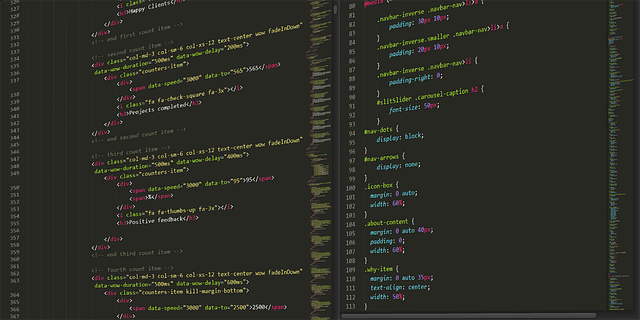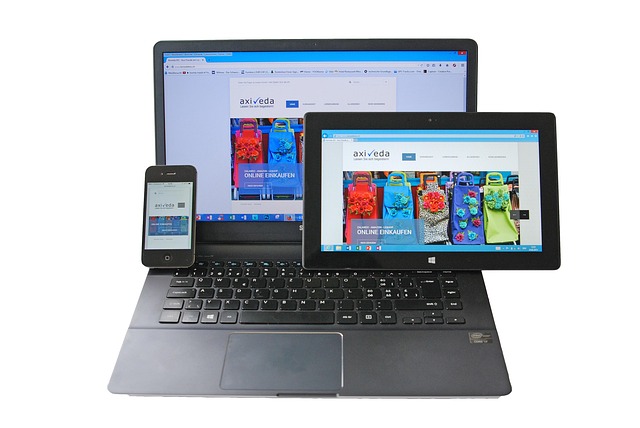Responsive Web Design (RWD) is a modern approach ensuring websites adapt seamlessly to various devices and screen sizes. By using flexible layouts, media queries, and asset optimization, developers create dynamic interfaces with optimal viewing experiences across desktops, tablets, and smartphones. This method eliminates the need for separate device-specific versions, simplifies maintenance, and enhances efficiency. RWD focuses on scalability, readability, accessibility, and performance, while adapting to future trends like IoT and AI for improved user experiences.
“Unleash the power of Responsive Web Design and create websites that adapt seamlessly to any device with our comprehensive guide. From Understanding Responsive Web Design: The Basics to Media Queries as a powerful tool, we explore key principles for effective scalability. Learn about Adaptive Images and Content Optimization Techniques to enhance user experiences. We also delve into challenges and future trends shaping this dynamic field, ensuring your website stays ahead in today’s digital landscape.”
Understanding Responsive Web Design: The Basics

Responsive Web Design, a cornerstone of modern web development, ensures websites adapt seamlessly to various devices and screen sizes. This approach is underpinned by the use of flexible layouts, images, and CSS media queries. By employing these techniques, developers create dynamic and user-friendly interfaces that offer an optimal viewing experience, regardless of whether users are accessing the site on a desktop computer, tablet, or smartphone.
The core principle revolves around making web content flexible and fluid, allowing it to resize and rearrange itself based on available space. This means that text, images, and other elements adjust harmoniously, ensuring readability and accessibility across different platforms. Responsive design also streamlines the user experience by eliminating the need for separate website versions tailored for each device, simplifying maintenance and enhancing overall efficiency.
Key Principles of Effective Scalability in Web Design

In the realm of Responsive Web Design (RWD), scalability is paramount. The key principles for effective scalability involve a harmonious blend of flexible layouts, media queries, and smart asset optimization. Flexible layouts, built with relative units like percentages and ems, ensure content adapts gracefully across various screen sizes, from mobile to desktop.
Media queries play a pivotal role in tailoring the design for different devices by allowing developers to apply specific CSS rules based on screen width, height, and orientation. Additionally, asset optimization techniques such as image compression, minification of HTML, CSS, and JavaScript, along with lazy loading, significantly reduce page load times, enhancing user experience and search engine optimisation (SEO).
Media Queries: A Powerful Tool for Responsiveness

Media queries are a pivotal tool in the arsenal of responsive web design, enabling developers to craft websites that seamlessly adapt to diverse screen sizes and devices. By utilizing CSS media queries, designers can apply specific styles based on the characteristics of the user’s device, such as its width, height, orientation, and resolution. This dynamic approach ensures that content remains legible, visually appealing, and fully functional across a wide range of platforms, from desktop computers to mobile phones.
By incorporating media queries into their workflows, developers can avoid the rigid layout constraints of traditional fixed-width designs. Instead, they gain the flexibility to create layouts that respond gracefully to changes in viewport dimensions, enhancing user experiences and promoting accessibility. This responsiveness is crucial for modern web design, as users increasingly access the internet through various devices, demanding websites that provide a consistent, high-quality experience regardless of screen size.
Adaptive Images and Content Optimization Techniques

Responsive web design goes beyond simply making a website look good on different screens; it’s about ensuring optimal performance and user experience across all devices. One key aspect is adaptive images, which adjust their size and quality based on the screen resolution. This technique not only prevents slow loading times but also conserves data for users with limited connectivity.
Content optimization is another critical component. Efficiently compressing and prioritizing content ensures that essential information loads quickly, enhancing user engagement. By implementing these responsive web design techniques, developers can create dynamic websites that seamlessly adapt to any screen size, providing a seamless browsing experience for all visitors.
Challenges in Implementing Responsive, Scalable Designs

Implementing responsive, scalable designs comes with its unique set of challenges. One of the primary hurdles is ensuring optimal user experience across a vast array of devices and screen sizes, from smartphones to large desktop monitors. This requires careful consideration of layout flexibility, image optimization, and content prioritization to adapt gracefully without compromising visual appeal or functionality.
Additionally, maintaining performance while adapting to diverse device capabilities is no trivial task. Developers must employ efficient coding practices, lazy loading techniques, and smart asset optimization strategies to prevent slow page loads and ensure smooth user interactions. Balancing these factors demands a meticulous approach to both design and development, underscoring the significance of Responsive Web Design in creating inclusive, accessible, and visually engaging online experiences.
Future Trends Shaping Responsive Web Design

As we move further into the digital age, several future trends are shaping and redefining the landscape of Responsive Web Design (RWD). One prominent trend is the increasing focus on adaptability and flexibility, ensuring websites seamlessly adjust to various devices, screen sizes, and orientations. With the rise of Internet of Things (IoT) devices, wearables, and diverse user preferences, RWD must evolve to accommodate these changes, providing an optimal user experience regardless of the platform.
Another emerging trend is the integration of artificial intelligence (AI) and machine learning (ML). These technologies can analyze user behavior and preferences, enabling dynamic content delivery and personalized experiences. By leveraging AI/ML, responsive designs can anticipate user needs, resulting in faster loading times, improved navigation, and enhanced visual elements tailored to individual users, making RWD more intuitive and engaging.
